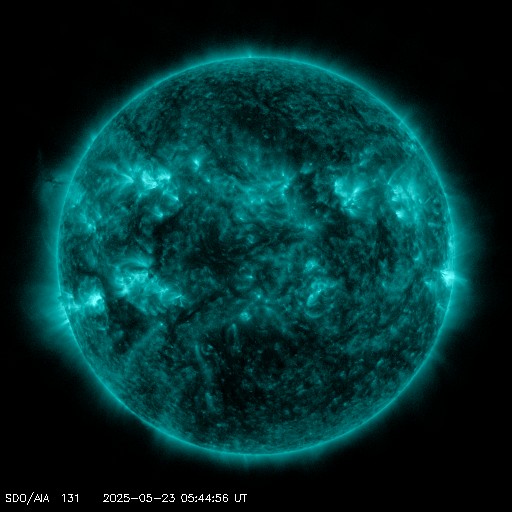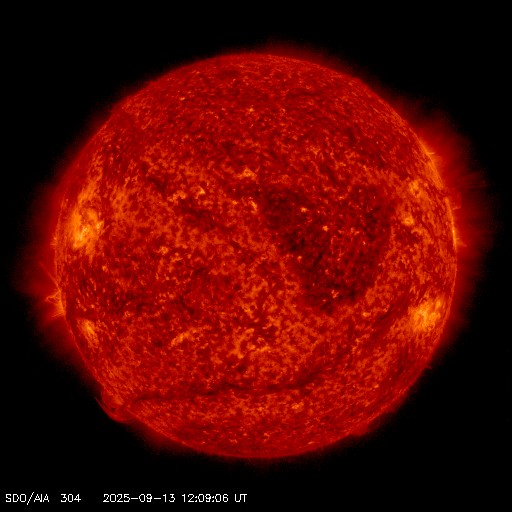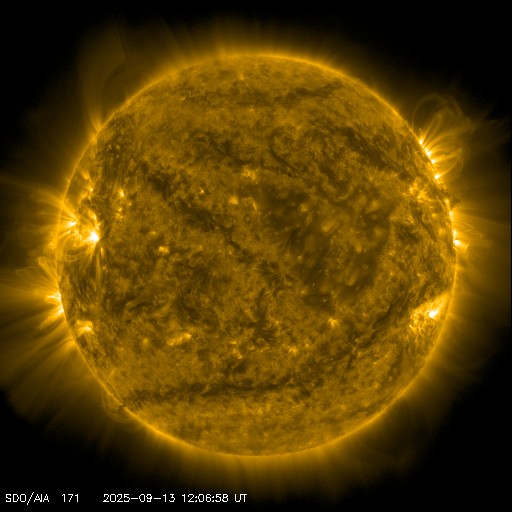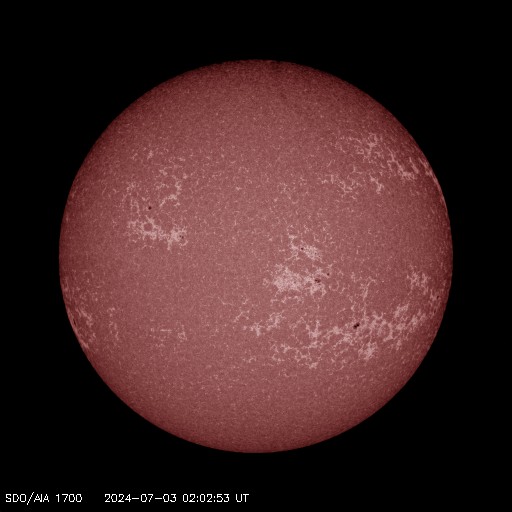Sun Images from now - updated every 10 minutes
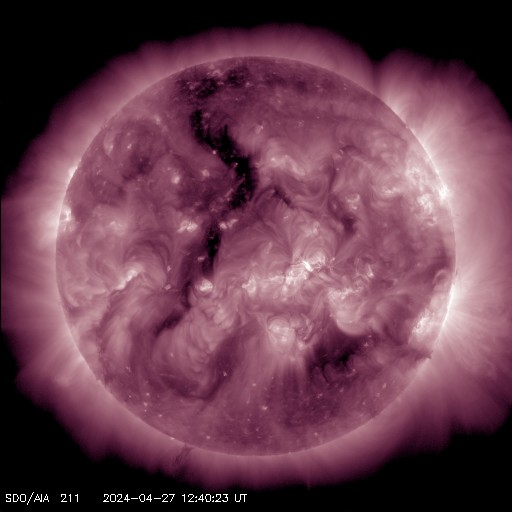
SDO / AIA 211Å = 21.1nm
Active regions, solar flares, and coronal mass ejections will appear bright here. The dark areas called coronal holes.
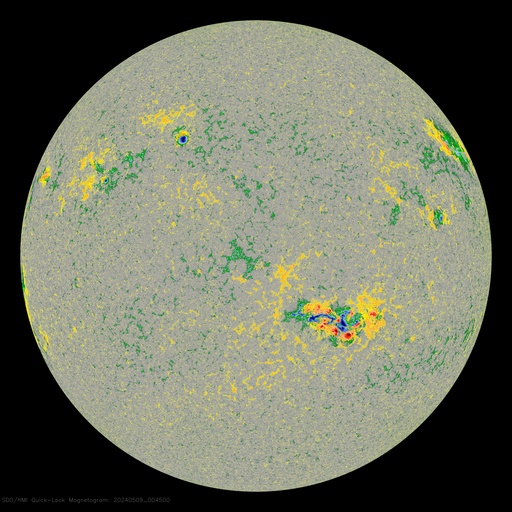
HMI Colorized Magnetogram
Field strengths <24 G are shades of gray. Positive Field Values are green and blue. Negative field values are yellow and red. Weak field regions appear mostly yellow or green. Increasingly positive values range from dark green to bright green at 236G. Negative values move from bright yellow to orange at -236G.
All sun pics by courtesy of NASA/SDO and the AIA, EVE, and HMI science teams.
HMI and AIA Spectral Bands
| Band | FWHM (Δλ, Å) | Primary role, ion(s) | Region of the Sun's atmosphere | Typical Temperature (as log T[K]) |
|---|---|---|---|---|
| 6173 Å | 75 mÅ | HMI scans Fe i 6173 | Intensity, velocity, and magnetic field of photosphere | 3.7 |
| 4500 Å | 500 | Continuum | Photosphere | 3.7 |
| 1700 Å | 200 | Continumm | Temperature minimum, photosphere | 3.7 |
| 304 Å | 12.7 | He ii | Chromosphere, transition region | 4.7 |
| 1600 Å | 200 | C iv, continumm | Transition region, upper photosphere | 5.0 |
| 171 Å | 4.7 | Fe ix | Quiet corona, upper transition region | 5.8 |
| 193 Å | 6.0 | Fe xii, xxiv | Corona and hot flare plasma | 6.1, 7.3 |
| 211 Å | 7.0 | Fe xiv | Active region corona | 6.3 |
| 335 Å | 16.5 | Fe xvi | Active region corona | 6.4 |
| 94 Å | 0.9 | Fe xviii | Flaring regions | 6.8 |
| 131 Å | 4.4 | Fe xx, xxiii | Flaring regions | 7.0, 7.2 |
